Your What does the theory of cognitive dissonance propose images are available. What does the theory of cognitive dissonance propose are a topic that is being searched for and liked by netizens now. You can Get the What does the theory of cognitive dissonance propose files here. Get all royalty-free photos and vectors.
If you’re looking for what does the theory of cognitive dissonance propose pictures information linked to the what does the theory of cognitive dissonance propose keyword, you have visit the ideal blog. Our website always gives you hints for downloading the highest quality video and image content, please kindly hunt and find more informative video content and images that match your interests.
What Does The Theory Of Cognitive Dissonance Propose. Preferences may themselves be affected by action choices. In the moment cognitive dissonance can cause discomfort stress and anxiety. Holding contradictory or inconsistent beliefs or ideas cause psychological discomfort. Cognitive dissonance is a theory in social psychology.
 Cognitive Dissonance Theory A Research Study And Associated Examples From Pakistan Overseas Pakistani Friends From opfblog.com
Cognitive Dissonance Theory A Research Study And Associated Examples From Pakistan Overseas Pakistani Friends From opfblog.com
Just as hunger impels a. Holding contradictory or inconsistent beliefs or ideas cause psychological discomfort. The world however is much. Person to change his opinions or his be. Festingers 1957 cognitive dissonance theory suggests that we have an inner drive to hold all our attitudes and behavior in harmony and avoid disharmony or dissonance. To as dissonance-reducing changes.
Also asked what is cognitive dissonance in organizational Behaviour.
And the degree of these effects often depends on how much disparity there is between the conflicting beliefs how much the beliefs mean to that person as well as with. According to this theory people want their belief to be consistent with one another and want their behaviours to be consistent with their beliefs. The theory of cognitive dissonance was advanced by Leon Festinger in the 1950s. They concluded that the data supported Cognitive Dissonance Theory Festinger 1957 a psychological theory that proposes that when cognitions beliefs values attitudes perceptions or behaviors are inconsistent with one another a negative psychological state of dissonance occurs that makes the individual evaluate the stimulus more negatively. This can be done by changing ones attitudes beliefs or behaviors. Holding contradictory or inconsistent beliefs or ideas cause psychological discomfort.
 Source: bookderives.com
Source: bookderives.com
Cognitive dissonance refers to a situation involving conflicting attitudes beliefs or behaviors. Cognitive dissonance causes feelings of unease and tension and people attempt to relieve this discomfort in different ways. Cognitive dissonance is a theory in social psychology. As presented by Festinger in 1957 dissonance theory began by postulating that pairs of cognitions elements of knowledge can be relevant or irrelevant to one another. Leon Festinger in 1957 proposed the theory of cognitive dissonance.
 Source: sites.google.com
Source: sites.google.com
Tips for resolving cognitive dissonance. This can be done by changing ones attitudes beliefs or behaviors. This produces a feeling of mental discomfort leading to an alteration in one of the attitudes beliefs or behaviors to reduce the discomfort and restore balance. The final condition necessary for cognitive dissonance to work has to do with external and internal justifications. The world however is much.
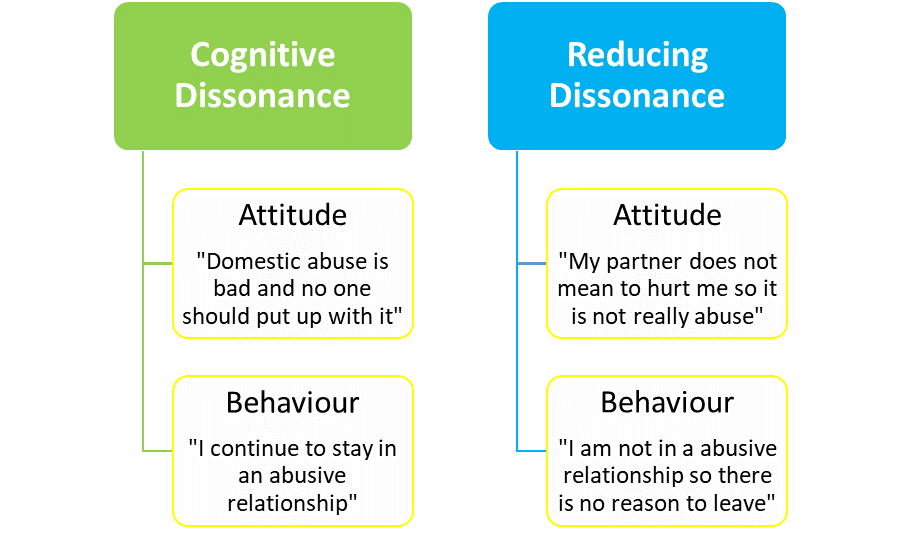 Source: pediaa.com
Source: pediaa.com
When people become aware of inconsistency among their beliefs or between their attitudes and their behaviour they experience cognitive dissonance an unpleasant state of. According to cognitive dissonance theory there is a tendency for individuals to seek consistency among their cognitions ie beliefs opinions. Cognitive dissonance is a theory of psychology that translates into thought conflict First proposed by US. Holding contradictory or inconsistent beliefs or ideas cause psychological discomfort. Cognitive Dissonance in Communication.
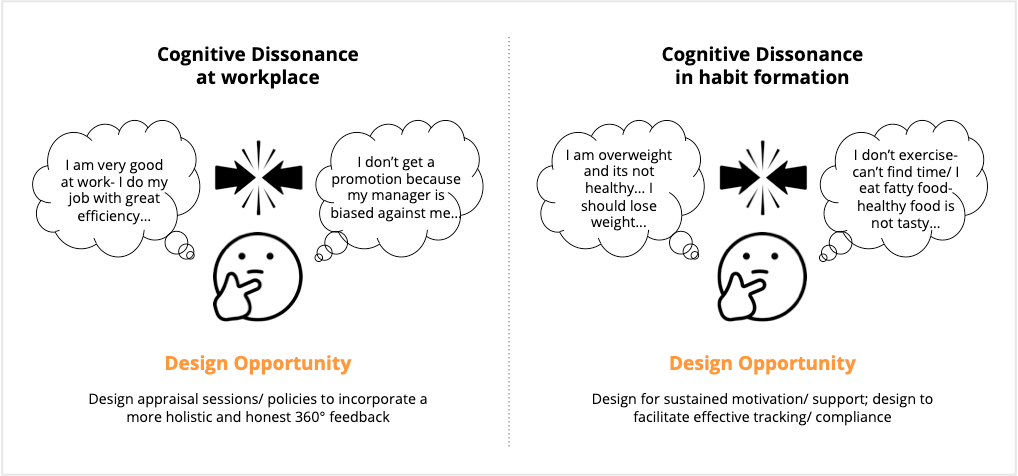 Source: ingenuity.siemens.com
Source: ingenuity.siemens.com
External justification refers to the process of identifying reasons outside of ones own control to support ones behavior beliefs and attitudes. This can be done by changing ones attitudes beliefs or behaviors. The world however is much. This is known as the principle of cognitive consistency. It refers to the mental conflict that occurs when a persons behaviors and beliefs do not align.
 Source: researchgate.net
Source: researchgate.net
The more dissonance we feel the more we are motivated to change something belief or action to reduce dissonance. Cognitive dissonance is a motivating. Cognitive dissonance is a theory in social psychology. Cognitive dissonance theory postulates that an underlying psychological tension is created when an individuals behavior is inconsistent with his or her thoughts and beliefs. Preferences may themselves be affected by action choices.
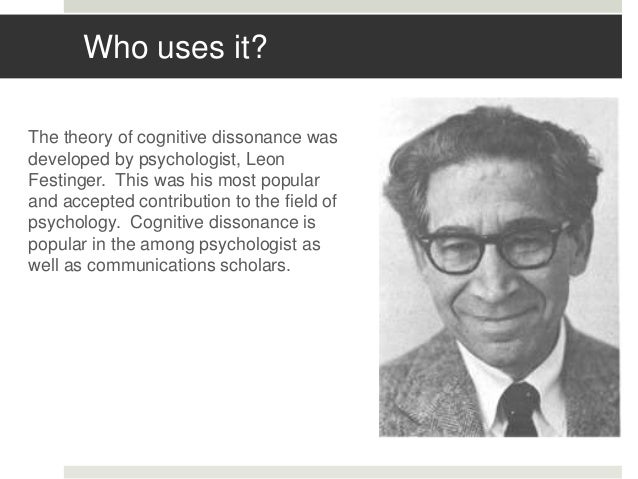 Source: blendspace.com
Source: blendspace.com
Festingers 1957 cognitive dissonance theory suggests that we have an inner drive to hold all our attitudes and behavior in harmony and avoid disharmony or dissonance. This underlying tension then motivates an individual to make an attitude change that would produce consistency between thoughts and behaviors. Who proposed cognitive dissonance theory. Cognitive dissonance is a theory in social psychology. External justification refers to the process of identifying reasons outside of ones own control to support ones behavior beliefs and attitudes.
 Source: thedecisionlab.com
Source: thedecisionlab.com
The theory of cognitive dissonance was advanced by Leon Festinger in the 1950s. The final condition necessary for cognitive dissonance to work has to do with external and internal justifications. Festingers 1957 cognitive dissonance theory suggests that we have an inner drive to hold all our attitudes and behavior in harmony and avoid disharmony or dissonance. A person experiencing cognitive dissonance becomes uncomfortable and is. Cognitive dissonance is a theory in social psychology.
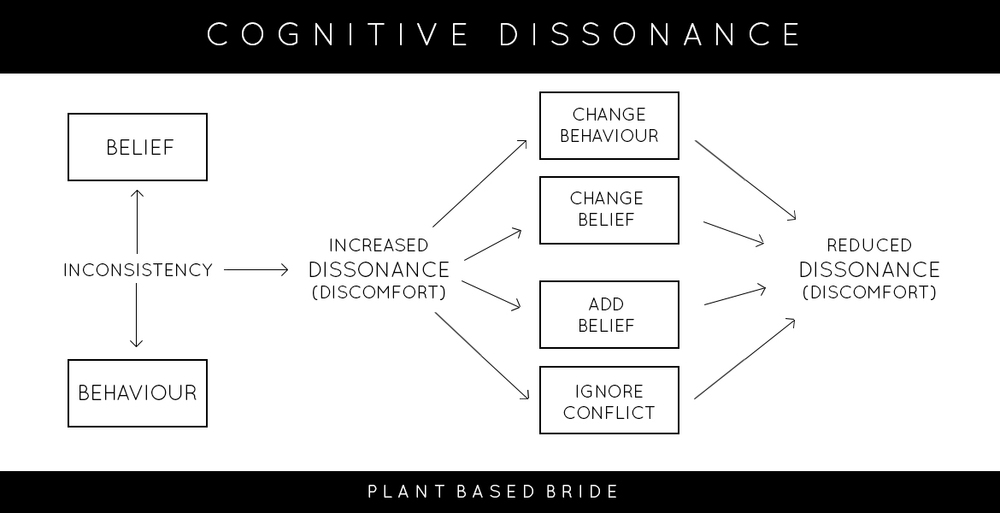 Source: medium.com
Source: medium.com
Two beliefs or a belief and an action are in conflict. Preferences may themselves be affected by action choices. They concluded that the data supported Cognitive Dissonance Theory Festinger 1957 a psychological theory that proposes that when cognitions beliefs values attitudes perceptions or behaviors are inconsistent with one another a negative psychological state of dissonance occurs that makes the individual evaluate the stimulus more negatively. Cognitive dissonance is a theory in social psychology. To as dissonance-reducing changes.
 Source: researchgate.net
Source: researchgate.net
This is known as the principle of cognitive consistency. Cognitive dissonance is a theory in social psychology. They concluded that the data supported Cognitive Dissonance Theory Festinger 1957 a psychological theory that proposes that when cognitions beliefs values attitudes perceptions or behaviors are inconsistent with one another a negative psychological state of dissonance occurs that makes the individual evaluate the stimulus more negatively. It was Leon Festinger who proposed the concept of cognitive dissonance in his 1957 book A Theory of Cognitive Dissonance. Cognitive dissonance theory postulates that an underlying psychological tension is created when an individuals behavior is inconsistent with his or her thoughts and beliefs.
 Source: opfblog.com
Source: opfblog.com
Advertisers marketers and public relations pros purposely create cognitive. According to cognitive dissonance theory there is a tendency for individuals to seek consistency among their cognitions ie beliefs opinions. Two beliefs or a belief and an action are in conflict. The tendency people have to avoid information that would. Person to change his opinions or his be.
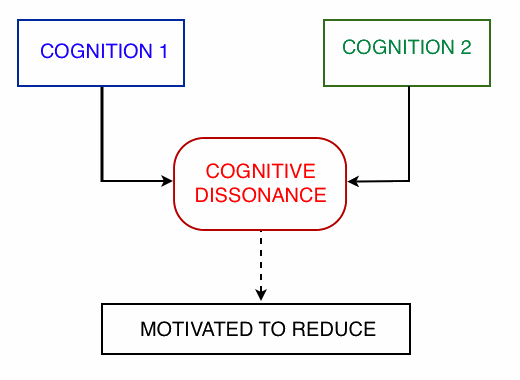 Source: cleanlanguage.co.uk
Source: cleanlanguage.co.uk
Cognitive dissonance theory postulates that an underlying psychological tension is created when an individuals behavior is inconsistent with his or her thoughts and beliefs. Cognitive dissonance is a theory in social psychology. The tendency people have to avoid information that would. This underlying tension then motivates an individual to make an attitude change that would produce consistency between thoughts and behaviors. It was Leon Festinger who proposed the concept of cognitive dissonance in his 1957 book A Theory of Cognitive Dissonance.
 Source: study.com
Source: study.com
Festingers 1957 cognitive dissonance theory suggests that we have an inner drive to hold all our attitudes and behavior in harmony and avoid disharmony or dissonance. Advertisers marketers and public relations pros purposely create cognitive. When there is an inconsistency between attitudes or behaviors dissonance something must change to eliminate the dissonance. Tips for resolving cognitive dissonance. This produces a feeling of mental discomfort leading to an alteration in one of the attitudes beliefs or behaviors to reduce the discomfort and restore balance.
 Source: researchgate.net
Source: researchgate.net
The theory of cognitive dissonance proposes that people have a motivational drive to reduce dissonance by. This underlying tension then motivates an individual to make an attitude change that would produce consistency between thoughts and behaviors. A person experiencing cognitive dissonance becomes uncomfortable and is. Cognitive dissonance is a motivating. The theory of cognitive dissonance was advanced by Leon Festinger in the 1950s.
 Source: researchgate.net
Source: researchgate.net
When people become aware of inconsistency among their beliefs or between their attitudes and their behaviour they experience cognitive dissonance an unpleasant state of. The more dissonance we feel the more we are motivated to change something belief or action to reduce dissonance. Leon Festinger in 1957 proposed the theory of cognitive dissonance. This underlying tension then motivates an individual to make an attitude change that would produce consistency between thoughts and behaviors. The theory of cognitive dissonance proposes that people have a motivational drive to reduce dissonance by.
 Source: deschutesmeridian.com
Source: deschutesmeridian.com
Cognitive dissonance theory postulates that an underlying psychological tension is created when an individuals behavior is inconsistent with his or her thoughts and beliefs. From TV Ads to PR Campaigns. In this book he posited that all people strive toward internal psychological consistency to be able to function well mentally in the real world. As presented by Festinger in 1957 dissonance theory began by postulating that pairs of cognitions elements of knowledge can be relevant or irrelevant to one another. Cognitive dissonance is a theory in social psychology.
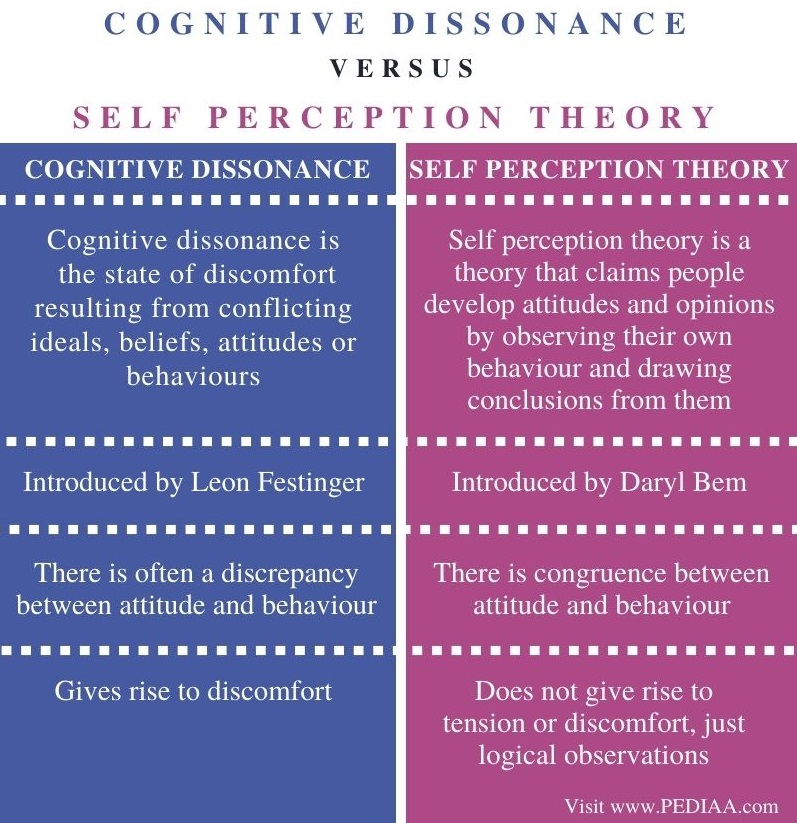 Source: pediaa.com
Source: pediaa.com
As presented by Festinger in 1957 dissonance theory began by postulating that pairs of cognitions elements of knowledge can be relevant or irrelevant to one another. Cognitive dissonance theory postulates that an underlying psychological tension is created when an individuals behavior is inconsistent with his or her thoughts and beliefs. It refers to the mental conflict that occurs when a persons behaviors and beliefs do not align. It proposes that inconsistencies among our beliefs attitudes knowledge andor behavior can give rise to the uncomfortable feeling of cognitive dissonance. According to cognitive dissonance theory there is a tendency for individuals to seek consistency among their cognitions ie beliefs opinions.
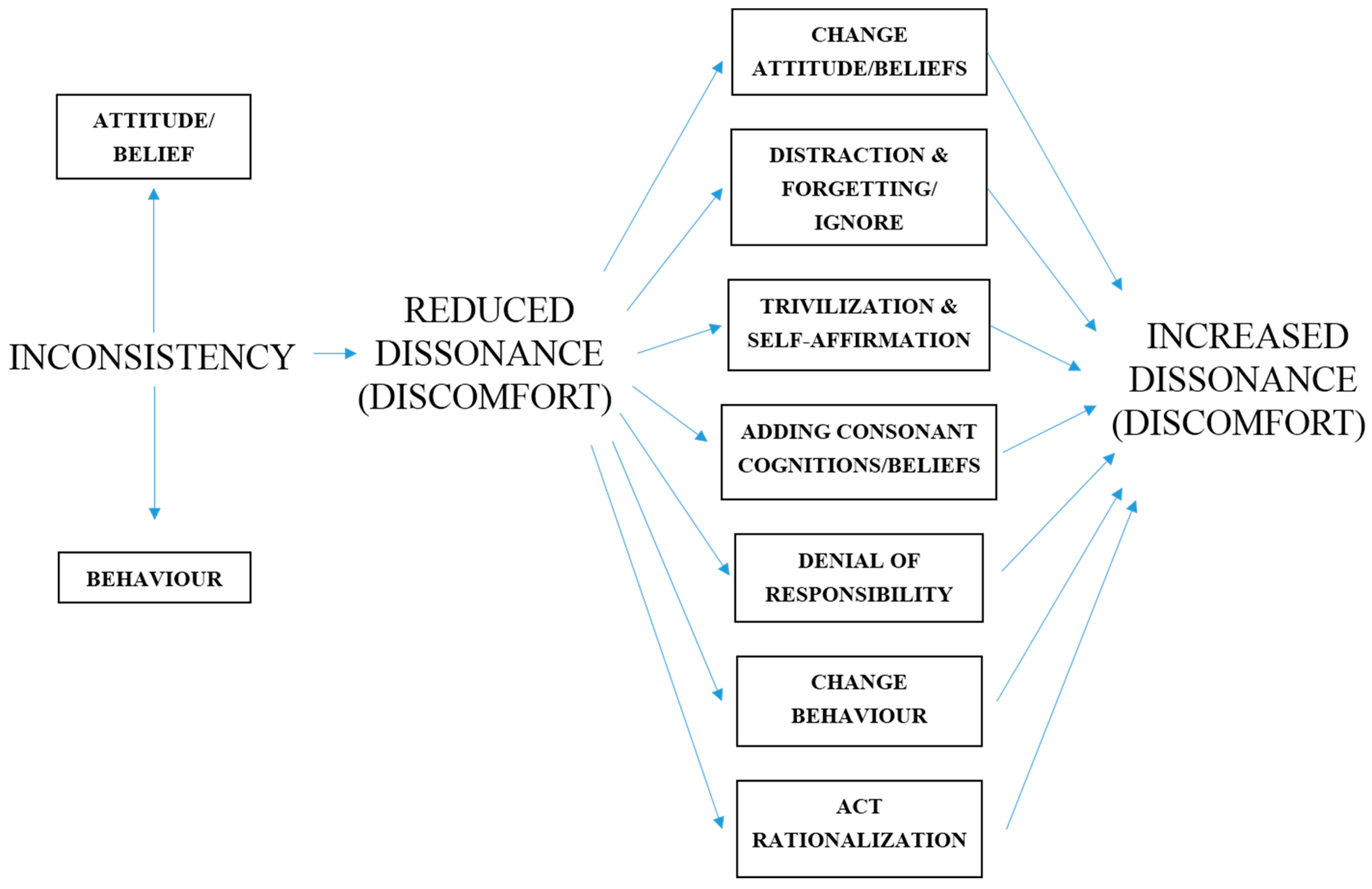 Source: mdpi.com
Source: mdpi.com
In the moment cognitive dissonance can cause discomfort stress and anxiety. According to cognitive dissonance theory there is a tendency for individuals to seek consistency among their cognitions ie beliefs opinions. According to this theory people want their belief to be consistent with one another and want their behaviours to be consistent with their beliefs. When there is an inconsistency between attitudes or behaviors dissonance something must change to eliminate the dissonance. Cognitive Dissonance in Communication.
 Source: sciencedirect.com
Source: sciencedirect.com
Advertisers marketers and public relations pros purposely create cognitive. The theory of cognitive dissonance proposes that people have a motivational drive to reduce dissonance by. This can be done by changing ones attitudes beliefs or behaviors. The final condition necessary for cognitive dissonance to work has to do with external and internal justifications. Cognitive dissonance is a theory in social psychology.
This site is an open community for users to do sharing their favorite wallpapers on the internet, all images or pictures in this website are for personal wallpaper use only, it is stricly prohibited to use this wallpaper for commercial purposes, if you are the author and find this image is shared without your permission, please kindly raise a DMCA report to Us.
If you find this site serviceableness, please support us by sharing this posts to your favorite social media accounts like Facebook, Instagram and so on or you can also bookmark this blog page with the title what does the theory of cognitive dissonance propose by using Ctrl + D for devices a laptop with a Windows operating system or Command + D for laptops with an Apple operating system. If you use a smartphone, you can also use the drawer menu of the browser you are using. Whether it’s a Windows, Mac, iOS or Android operating system, you will still be able to bookmark this website.






